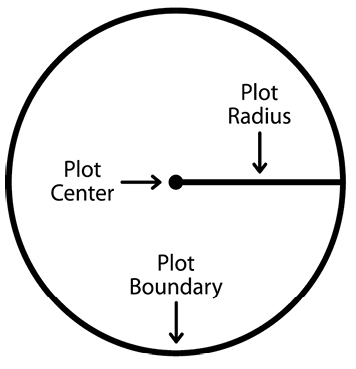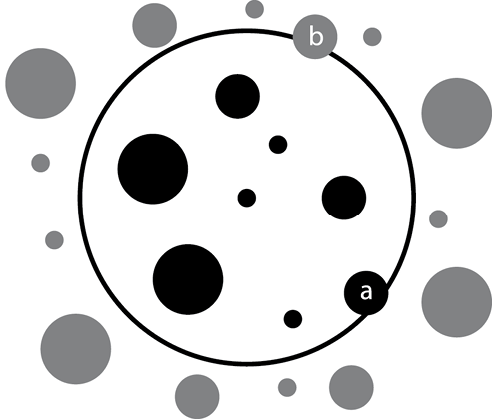Simplifying Southern Pine Thinning with Stand Density Index — MSUES Southern Pine Thinning: A Smartphone Application
Producing valuable sawtimber is often the primary objective of landowners managing pine plantations. To qualify as sawtimber, trees should possess a suite of desirable physical characteristics, including having a straight main stem that is limb-free and that has grown to at least 14 inches in diameter at breast height (DBH)—4.5 feet above ground level. Tree stems lacking one or more of these characteristics are often downgraded to pulp, which brings significantly lower stumpage prices.
Maintaining control over the growing environment is one of the best ways to develop sawtimber characteristics. At the beginning of the rotation, planting density is usually set to allow individual seedlings full access to light, moisture, and soil nutrients. This planting strategy facilitates rapid expansion of seedling crown and root area, leading to favorable height and diameter development. Over time, however, growth rates begin to slow as root and crown systems of neighboring trees begin to compete with one another for resources.
Competition among trees has mixed effects on tree stems. Competition for light initiates self-pruning of limbs, which encourages clear, defect-free wood development and straight vertical growth. Conversely, increased resource competition reduces vigor and diameter growth of individual trees. Slower growth can lengthen timber rotations and increase susceptibility to southern pine beetle infestation.
Thinning to reduce tree density represents the ideal trade-off to this common problem. Thinning increases resource availability (water and soil nutrients) within a plantation by removing poorly formed or slower-growing trees that are likely to be lost to mortality. If performed correctly and in a timely manner, thinning can restore rapid growth rates to remaining favorably formed crop trees. However, if thinning is applied at the wrong time or at the wrong intensity, it can result in plantations that are understocked and poorly formed or overstocked and growing slowly.
Many landowners recognize that thinning is an important step in plantation management. However, they struggle to decide when and how intensively they should thin. While this apprehension is understandable, making thinning decisions does not have to be a stressful endeavor. In fact, with the use of some basic forestry tools, appropriately prescribing a thinning operation can be a simple process.
Stand density index (SDI) is one tool that can simplify the thinning decision process. SDI is based on decades of research detailing how growth and survival is affected by competition between trees. SDI uses only the average number of trees per acre and the average DBH of trees in your plantation to determine whether your plantation is in need of thinning. Specific density management diagrams have been developed for each of the four major southern pine species. Learning how to use these diagrams will improve your odds of avoiding southern pine beetle infestation and increase your likelihood of producing valuable sawtimber.
Mississippi State University Extension offers a smartphone application that incorporates SDI to help determine if a pine planation is in need of thinning. MSUES Southern Pine Thinning is currently available through the Apple App Store. This app provides a graphical depiction of the density of a pine plantation and indicates whether or not the stand is in need of thinning. The line between well stocked and understocked (full site occupancy line) is also provided as a target density for the residual stand that should be left after thinning.
Guide to Forest Inventory Plots
Step 1. Walk into your pine plantation and randomly stop at any point. This point will become the center of your inventory plot. It may be helpful to set a chaining pin or stake in the ground to mark this location.
Step 2. From the plot center point, stretch a string or measuring tape to establish the plot radius or outer boundary for the plot (Figure 1). For a 100th-acre plot, the plot radius is 11 feet 9 inches, or 11.75 feet. For older pines, you may want to establish a 10th-acre plot, which has a 37.2-foot radius.
“In” trees are those trees located within the plot boundary. “In” trees should be measured using the procedures outlined in Step 3. “Out” trees are those located outside the plot boundary. These trees should NOT be measured. Trees located right on the boundary line can be either “in” or “out” depending on where the center of the tree is. See Figure 2 for help with boundary line trees.
Step 3. Measure the DBH of each “in” tree. To ensure each “in” tree is measured, mark your first tree and proceed measuring trees in a clockwise direction until all trees in the circle have been measured. Record this information in the plot entry screen detailed in step 6 of the Guide to Thinning Southern Pines User Tutorial. This tutorial can be accessed from the main screen of the smartphone app through the designated “App Tutorial” button.
Step 4. Repeat Steps 1–3 on at least four additional random locations throughout your stand. While your plots should be random, it is important to distribute them evenly across your property. This will help account for any site quality differences that may exist in your stand.


Publication 3664 (POD-04-23)
Revised by Brady Self, PhD, Associate Extension Professor, Forestry, from an earlier version by John Willis, PhD, former Assistant Professor, Forestry, and James Henderson, PhD, Professor and Head, Coastal Research and Extension Center.
The Mississippi State University Extension Service is working to ensure all web content is accessible to all users. If you need assistance accessing any of our content, please email the webteam or call 662-325-2262.

